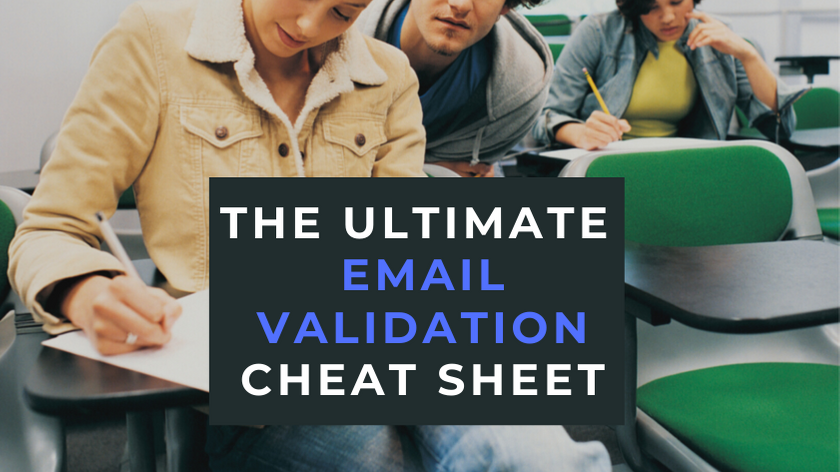
Verify before you hit send! Don’t know how? Keep reading.
Even with all the social media tools available, recruiters usually opt to send an email as their first method of contact.
With all of the Chrome Extensions available, finding an email is relatively easy. But validating emails is not a step most recruiters take. And unfortunately, without validation, you will never know if a candidate is not responding because they are not interested, or if they just never got the email.
Let’s start with finding emails. We’ll use John Smith as our test candidate.
You have identified the perfect candidate, John Smith, on LinkedIn. You have his bio and name for the companies he has worked for, but what you don’t have is his email address. So, how do you find out what his work email is? Here is one way to search for a valid email address.
1 – Find the Company Domain Name
A company’s name is not always their domain name. For example, American Airlines’ domain name is “AA.com.”
Another point to consider is that not every company is a .com. There are .IO or .CO or .Org. So your first step is to identify the proper domain name. Fortunately, most companies on LinkedIn will have a profile page identifying their domain name.
Another great way to find this out is to use Blockspring. This is a data services company that connects spreadsheets to any web service. There is a Blockspring template you can use that, once populated with company names, will automatically search for company pages and domain names. Click here to try it for yourself.
2 – Find the Correct Email Structure
The most common email structures are:
- firstinitiallastname@company.com
- firstname.lastname@company.com
- firstnamelastname@company.com
- lastname@company.com
- firstname_lastname@company.com
- firstinitial_lastname@company.com
- firstnamelastinitial@company.com
- firstname@company.com
3 – Verify the Email
The next step would be to do a search to see if the email you are trying matches up to the person you are looking for.
Tools like Email Checker, Free Email Verifier, and MailTester will allow you to enter an email and see if the email is valid. To make sure that the email that you have validated is for the right person, cross reference it by entering it into LinkedIn, Facebook, or Twitter. Also, you can do a simple Google search using Boolean such as “John Smith” @companyname.com.
The methodology above works if you are just checking a few emails. But if you are trying to check dozens or hundreds of emails, you should use a bulk email tool. NeverBounce, Bulk Email Checker, and HuBuCo are all examples of tools that can verify hundreds of emails at a time.
The tips listed above really are showing you the long way to see if an email is valid or not. In other words, they help you to find out if the email is real. But, there are several things that you have to take into consideration.
Catch-All Email Accounts
A catch-all email account is set up to receive all messages that are sent to an incorrect email address for a domain.
For example, you have three email addresses set up for companyname.com — [email protected], sales@ companyname.com, and [email protected]. Companies often set up [email protected] as a catch-all email account. Then, any email messages sent to [email protected] (or any invalid email address), are sent to the catch-all account ([email protected]).
So, although you may have validated an email address, that does not mean it actually got delivered to the person it was intended to go to.
Spam Filters
You can have the right email address, but based on your email content it may still end up in a spam filter. According to an article on ReturnPath.com, only 79 percent of permissioned email marketing messages reached consumer’s inboxes, according to a recent study conducted by global data solutions provider Return Path. The rest were delivered to spam folders or weren’t delivered at all.
Here are some tips to keep your emails out of the spam box.
- Don’t use “Spammy” Language — Duh. But really, this is the most common reason that emails are going into someone’s spam box. Avoid using phrases like, “to whom it may concern,” “click here,” “dear recipient,” “cash,” or “make more money.”
- Include a Plain Text Version of Your Email — Plain Text means sending an email with no formatting options such as bold, underlines, italics, graphics, or other layout options.
- You are Too Excited!!!! Or Are You? — Believe it our not, if you use an exclamation point and a question mark in your subject line, it will get flagged by a spam filter.
- Get Your Domain Verified — Have you ever heard of SPF, DKIM, or DMARC? These are the acronyms represent entities where you can authenticate your domain, which will help your email from going into spam filters.
There is never enough time in the day. Don’t waste time sending emails that are going to bounce. Take the time to validate emails and you will have a better response rate — and more starts.
Authors
Noel Cocca
Partner and CEO of RecruitingDaily.com LLC - Fan of good recruiting talk, seeker of gadgets and adoring father of my kids. When the screen goes dark you can find him coaching baseball, downhill skiing, or looking for ways to make life easier for his wife.
Recruit Smarter
Weekly news and industry insights delivered straight to your inbox.





